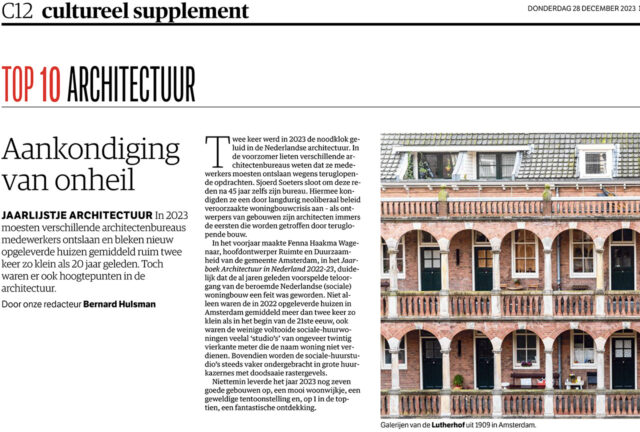28 December 2023 – For the second time at the first place of the Annual Architecture List in NRC (Dutch daily newspaper and cultural opinion leader), although my merit is limited and perhaps problematic.
Architecture critic Bernard Hulsman’s list has an activist title Announcement of doom. He asserts that the demise of famous Dutch housing has become a fact: Nevertheless, the year 2023 still yielded seven good buildings, a beautiful housing estate, a great exhibition and, at the top of the list, a fantastic discovery. The Lutherhof, groundbreaking but, until 2023, completely forgotten social housing from 1909, rediscovered by the architect Hans van der Heijden. In the Lutherhof, the only residential palazzo and the first deck-access housing in the Netherlands, Van der Heijden sees an alternative to boring residential towers.
Lutherhof has been the subject of study and publication this year. We have collated the results in the cahier Leren van het Lutherhof. I am happy to contribute to the conversation about housing developments with my enthusiasm for Lutherhof.
